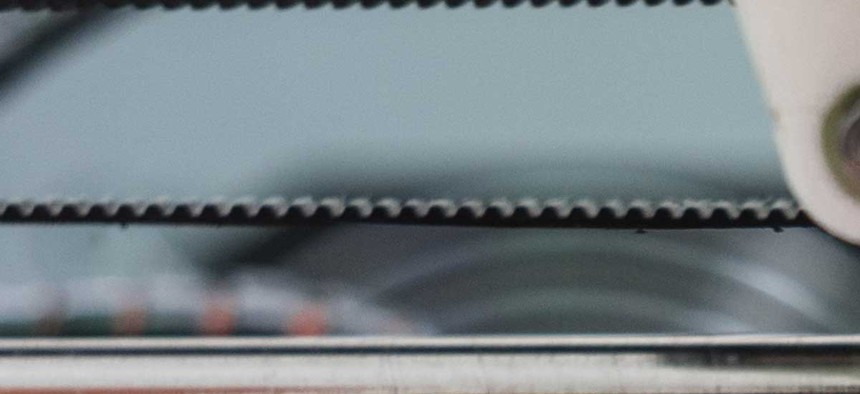
Sergi Lopez Roig via Shutterstock
The Defense Industry Is Expanding the Use of 3D Printing
The Navy is still several years away from being able to print spare parts for ships and airplanes, but ‘that day will surely come.’ By Marcus Weisgerber
The Pentagon and the defense industry are rapidly expanding the use of 3D printing to make parts and tools for more sophisticated military equipment.
The technology—which makes manufacturing more agile and wastes very little material—is already being used aboard the USS Essex, a U.S. Navy amphibious assault ship.
“The crew has printed everything from plastic syringes to oil tank caps, to the silhouettes of planes that are used on the mock-up of the flight deck to keep the flight deck organized,” Adm. James “Sandy” Winnefeld, vice chairman of the Joint Chiefs of Staff, said Monday at the Concordia Summit in New York.
The Navy is still “several years away” from being able to print spare parts for ships and airplanes, but “that day will surely come,” he said.
DOD is using these 3D printing machines across the military services. An item can be printed from an electronic blueprint or scanning an existing part. The U.S. Navy has about 70 3D printing, or additive manufacturing, projects at dozens of sites, Winnefeld said.
The Obama administration has been interested in expanding the use of 3D printing in America for a number of years. In 2012, the Pentagon stood up the National Additive Manufacturing Innovation Institute in Youngstown, Ohio. And many companies are using 3D printing more regularly in the manufacturing process.
(Related: The Army Is Developing 3D Printers to Make Food)
Defense giant Lockheed Martin is using high-tech 3D printers to manufacturer tools used to build the F-35 Joint Strike Fighter, a next-generation fighter jet that will be flown by the U.S. military and allies.
“There are no 3D-printed parts flying on F-35 today, [but] we use hundreds of 3D-printed tools for F-35 manufacturing such as bracket locators and drill templates,” Lockheed spokesman Mark Johnson said. “We are working on 3D printing of parts, but they are still a few years in the future.”
In June, Aerojet Rocketdyne announced it had successfully tested an engine built entirely using additive manufacturing.
“The engine, which is normally comprised of dozens of parts, consisted of only three additive-manufactured components: the entire injector and dome assembly; the combustion chamber; and a throat and nozzle section,” the company said in a statement earlier this year.
Winnefeld also touted General Electric’s use of 3D printing to make jet engine valves.





